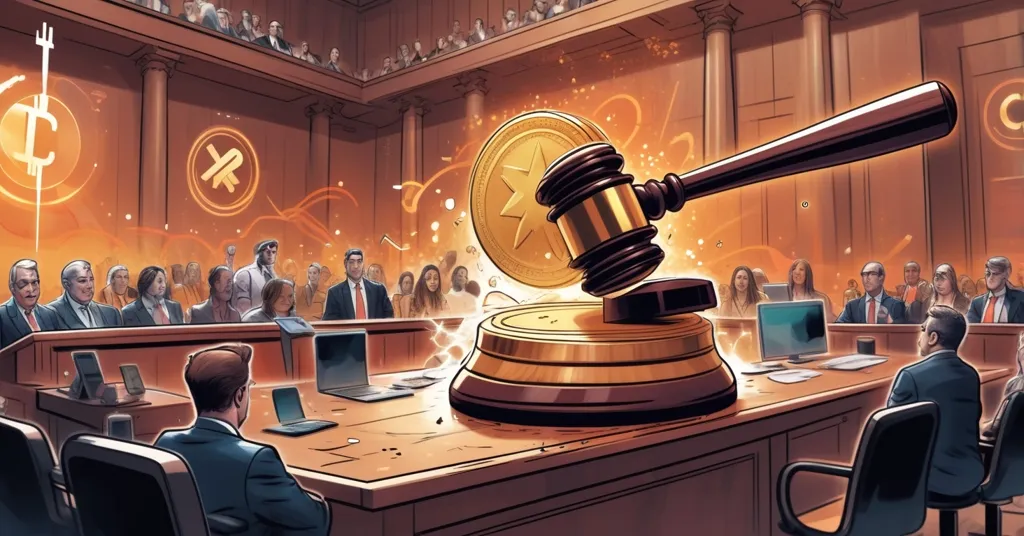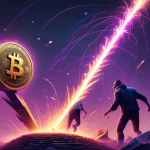Ripple’s XRP Under Scrutiny: Legal Battles, CBDC Shifts, and Market Viability

Ripple’s XRP Faces Scrutiny: Analyzing Its Use Case and Future Prospects
Ripple’s XRP token continues to captivate the crypto world, despite facing a prolonged legal battle with the SEC. Recent developments, including a shift towards Central Bank Digital Currencies (CBDCs), have sparked debate about XRP’s long-term viability. Amidst this, Ripple’s payment network, RippleNet, showcases robust performance, processing $7 billion in transactions annually. However, as the crypto space evolves, questions remain about XRP’s real use case and its place in the market.
- 43.8% of respondents in Patrick Bet-David’s survey believe Ripple has superior technology.
- Eric Yakes questions XRP’s real use case amidst Ripple’s pivot to CBDCs.
- Ripple’s RippleNet processes $7 billion in payments annually despite legal challenges.
Patrick Bet-David’s survey on X (formerly Twitter) recently revealed a surprising trend: 43.8% of 178,803 respondents believe Ripple has the best long-term technology, edging out Bitcoin at 35%. This has left Bitcoin maximalists puzzled. Since its launch in 2012, Ripple aimed to streamline remittance payments and banking settlements. However, its recent pivot towards developing Central Bank Digital Currencies (CBDCs) — digital currencies issued by central banks similar to a digital version of a country’s fiat currency — has stirred controversy.
Eric Yakes, an author and venture capitalist at EpochVC, questions the utility of XRP in the face of Ripple’s new direction. He challenges the community to reflect on XRP’s use, saying,
“Ripple has been around since 2012, and the question remains: How has it been used? What’s been done with it?”
Yakes further argues that even if Ripple successfully develops a CBDC, XRP itself may not see significant usage. He states,
“Its best case scenario is that it’s a CBDC and its XRP token is not going to be used for that. There isn’t value that’s going to accrue to that token, so if you’re thinking that, it’s never going to win.”
This critique raises valid concerns about XRP’s future value.
Despite these criticisms, Ripple’s RippleNet continues to function effectively, processing $7 billion in payments each year. This operational resilience, coupled with Ripple’s persistent marketing efforts, keeps XRP in the conversation. But why does XRP continue to attract attention even as Ripple faces regulatory hurdles?
The appointment of Brian Quintenz to head the CFTC could signal a more crypto-friendly regulatory landscape. Talks of a national cryptocurrency repository, where XRP might play a significant role, suggest potential government involvement that could boost its credibility. Moreover, there’s a possibility of regulatory bodies loosening guidelines, which might lead to XRP’s inclusion in exchange-traded funds (ETFs), enhancing its liquidity and investor interest.
In a significant legal development, a 2023 ruling declared XRP not to be a security, which the SEC did not appeal. This decision could pave the way for XRP to be recognized as a commodity, providing much-needed regulatory clarity. Additionally, negotiations are underway to reduce the $125 million fine imposed by Judge Analisa Torres in August 2024, potentially easing Ripple’s financial burden.
Legal experts like Andrew Parish of Arch Public believe the Ripple vs. SEC lawsuit is approaching its endgame. Parish predicts three key outcomes: recognition of XRP as a commodity, reduced fines for Ripple, and broader implications for future crypto litigation. John Deaton and Fred Rispoli, respected attorneys, have echoed the significance of these developments. Meanwhile, Eleanor Terrett of Crypto America suggests that Ripple’s efforts to remove the permanent injunction are the main holdup in settling the case.
While XRP navigates these challenges, competitors like Rexas Finance (RXS), which has raised over $47.11 million for real-world asset tokenization, are gaining traction. RXS’s upcoming exchange listings and strong presale performance indicate its growing momentum. Meanwhile, the Cardano community argues for the superiority of their technology, adding to the competitive pressure on XRP.
Despite the skepticism, one can’t deny the crypto world’s love for a comeback story. XRP’s future may hinge on regulatory developments and its ability to carve out a unique niche. Whether it can shake off the doubts and prove its worth remains to be seen, but the journey promises to be anything but dull.
Key Takeaways and Questions
- What is the current sentiment towards Ripple’s XRP token in the crypto community?
The sentiment is mixed, with optimism from 43.8% of respondents in Patrick Bet-David’s survey, contrasted by skepticism from critics like Eric Yakes.
- What is Eric Yakes’ stance on XRP’s potential as a Central Bank Digital Currency (CBDC)?
Yakes opposes Ripple’s shift towards CBDCs, arguing that XRP will not accrue value in this context, diminishing its potential success.
- How has Ripple’s focus evolved since its inception in 2012?
From facilitating remittance payments and banking settlements, Ripple has pivoted towards developing technologies for Central Bank Digital Currencies (CBDCs).
- What is the current impact of Ripple’s legal battle with the SEC on its operations?
Despite the ongoing lawsuit, Ripple continues to process $7 billion in payments annually through RippleNet, demonstrating operational resilience.
- Why are Bitcoin investors feeling frustrated and confused by the excitement around XRP?
Bitcoin investors are puzzled by XRP’s resilience and market traction, especially amid Ripple’s legal challenges and shifting focus.



